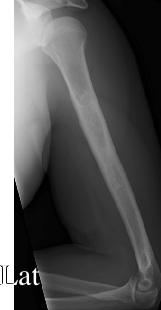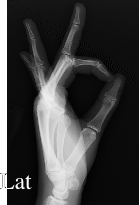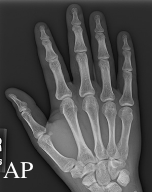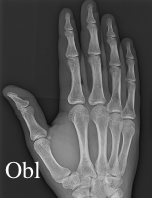PA Anatomy: Imaging Overview-Radiography |
||||||
For most parts of the body, we prefer to obtain a minimum of TWO views, at 90 degrees from each other (called 'orthogonal' views), since this gives us the best representation of the actual 3D structure of the body part. If the bone or structure in question is a very complex shape (like the scapula or the hand), we may add other views such as 'oblique' views, which are at different angles. One of the limitations of radiographs is overlap of structures. |
||||||||||||||||
 |
||||||||||||||||
 |
||||||||||||||||
The humerus, or bone of the upper arm, is a simple tubular shape, and when we perform radiographs, we usually do an AP and a lateral view, as shown |
||||||||||||||||
 |
||||||||||||||||
 |
 |
|||||||||||||||
The hand is a much more complicated structure, and we often do AP, lateral and additional views, such as the oblique view shown, which is in between an AP and a lateral in position. This helps with overlapping structures, as we are likely to catch them best in only one of the views |
||||||||||||||||